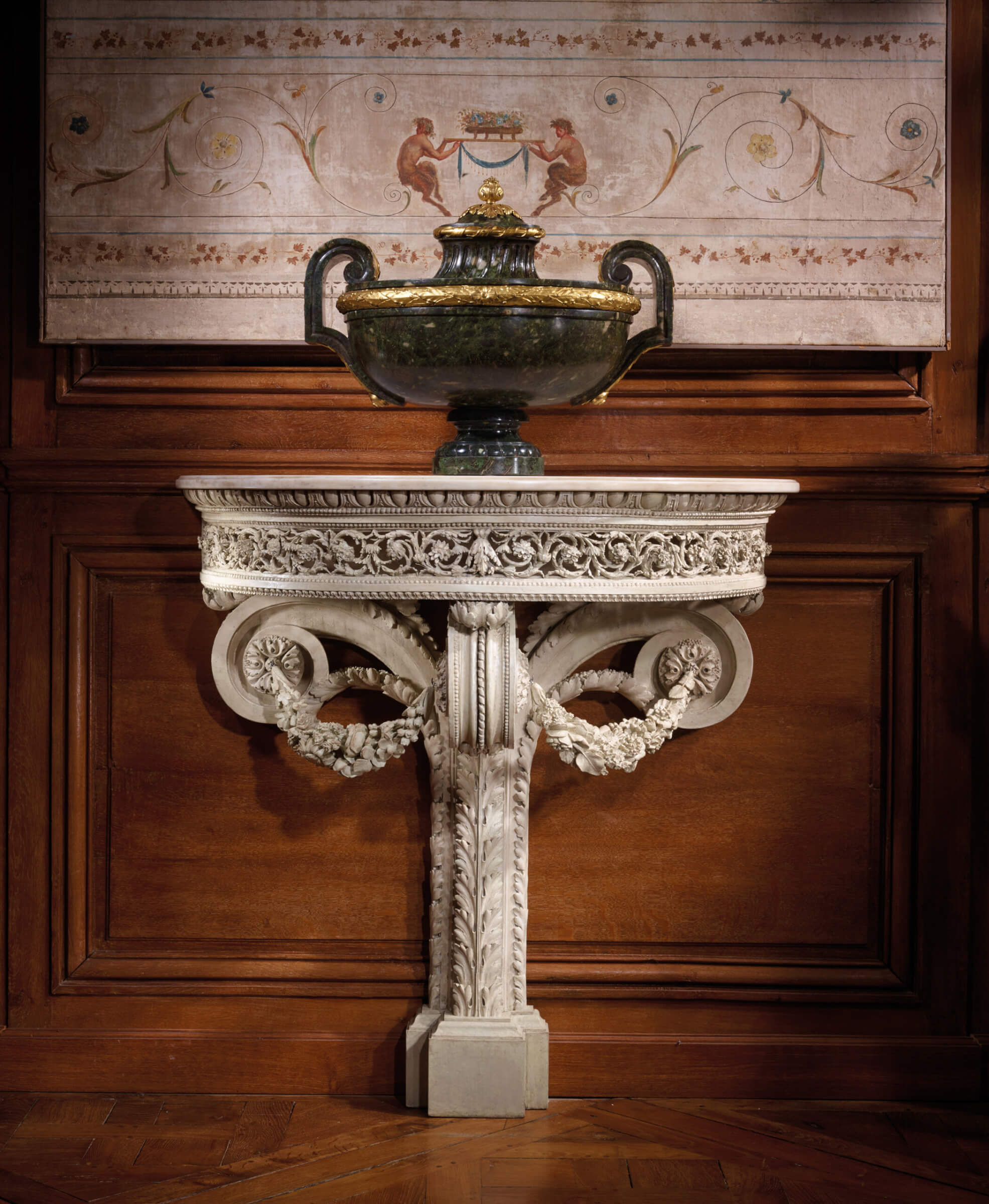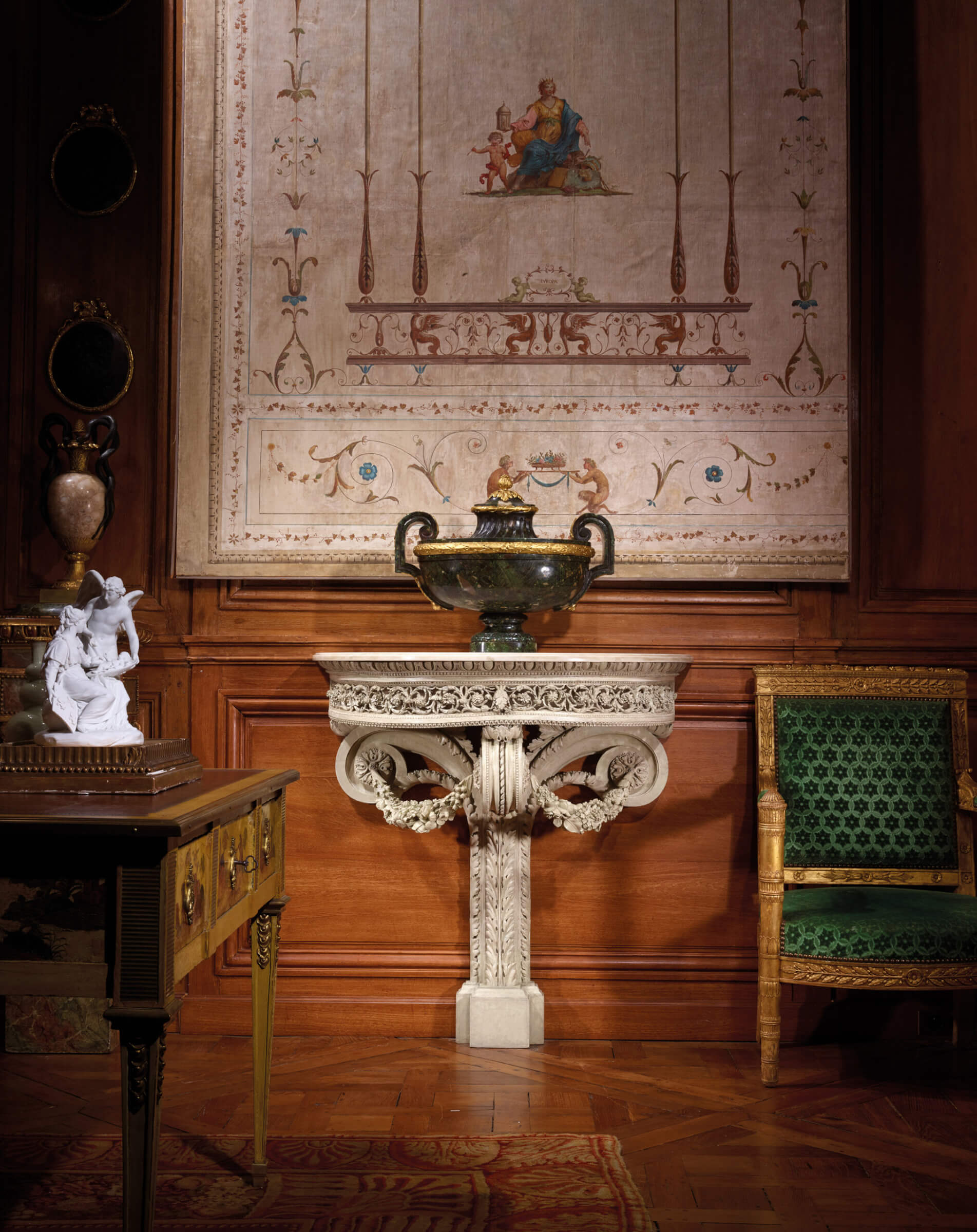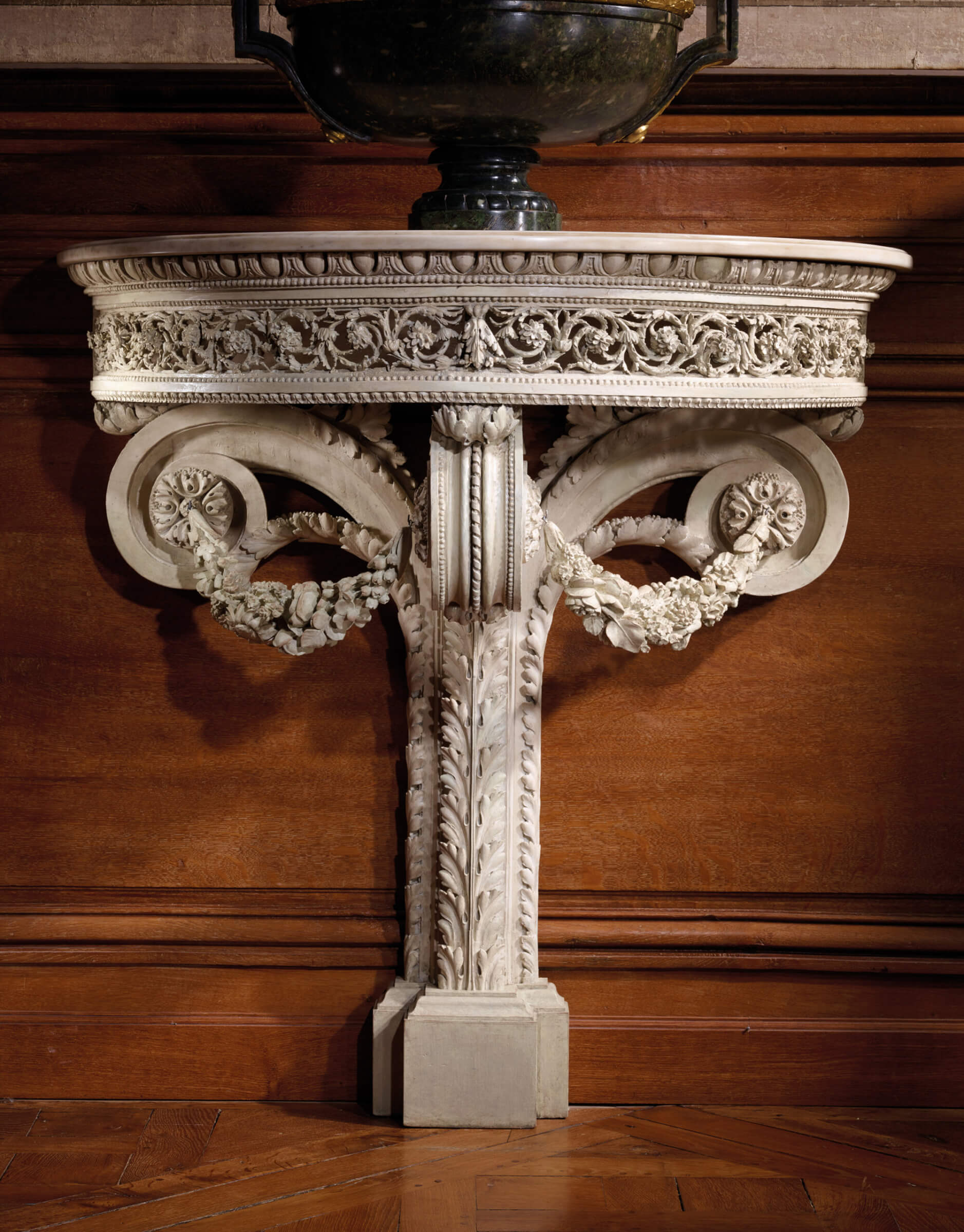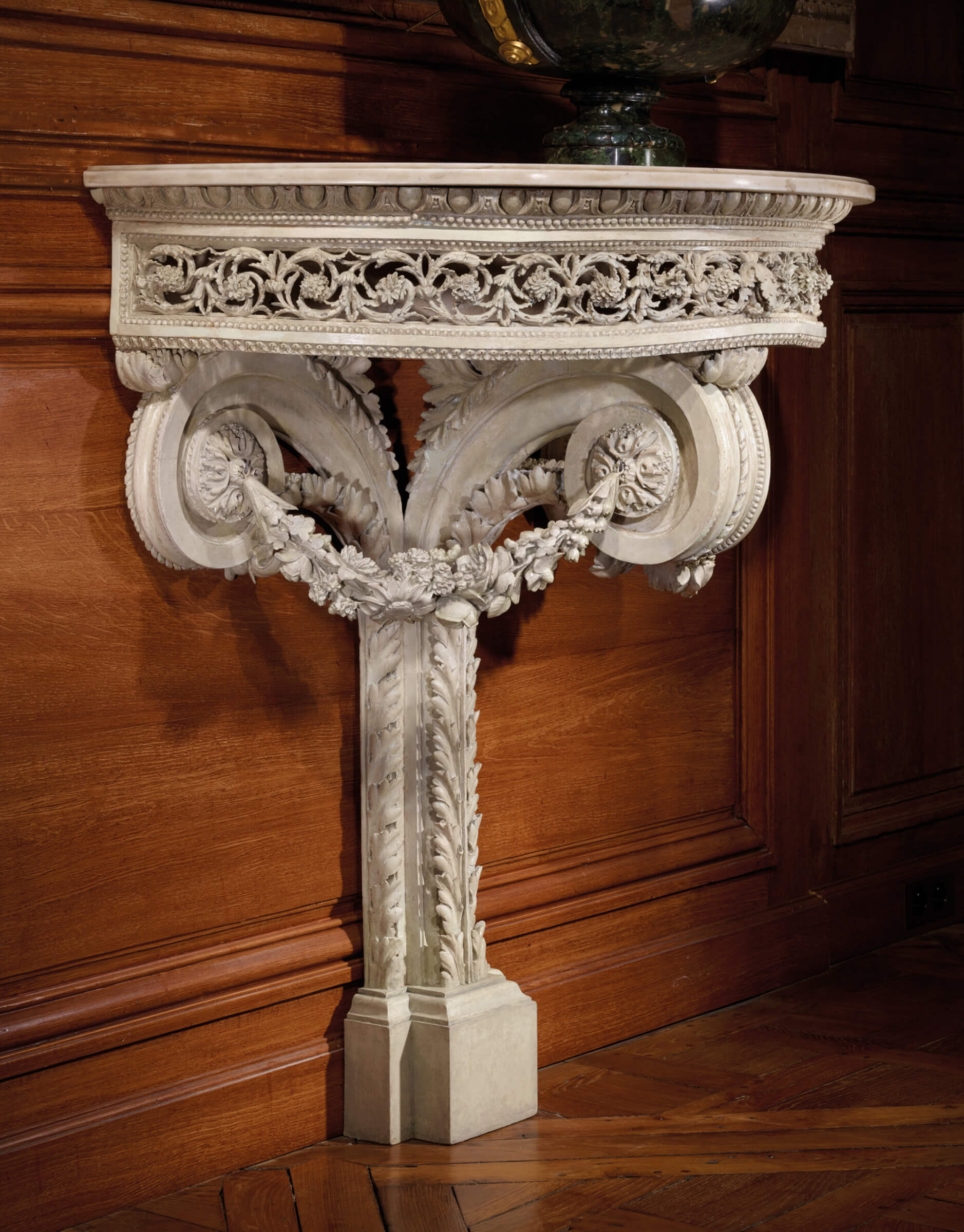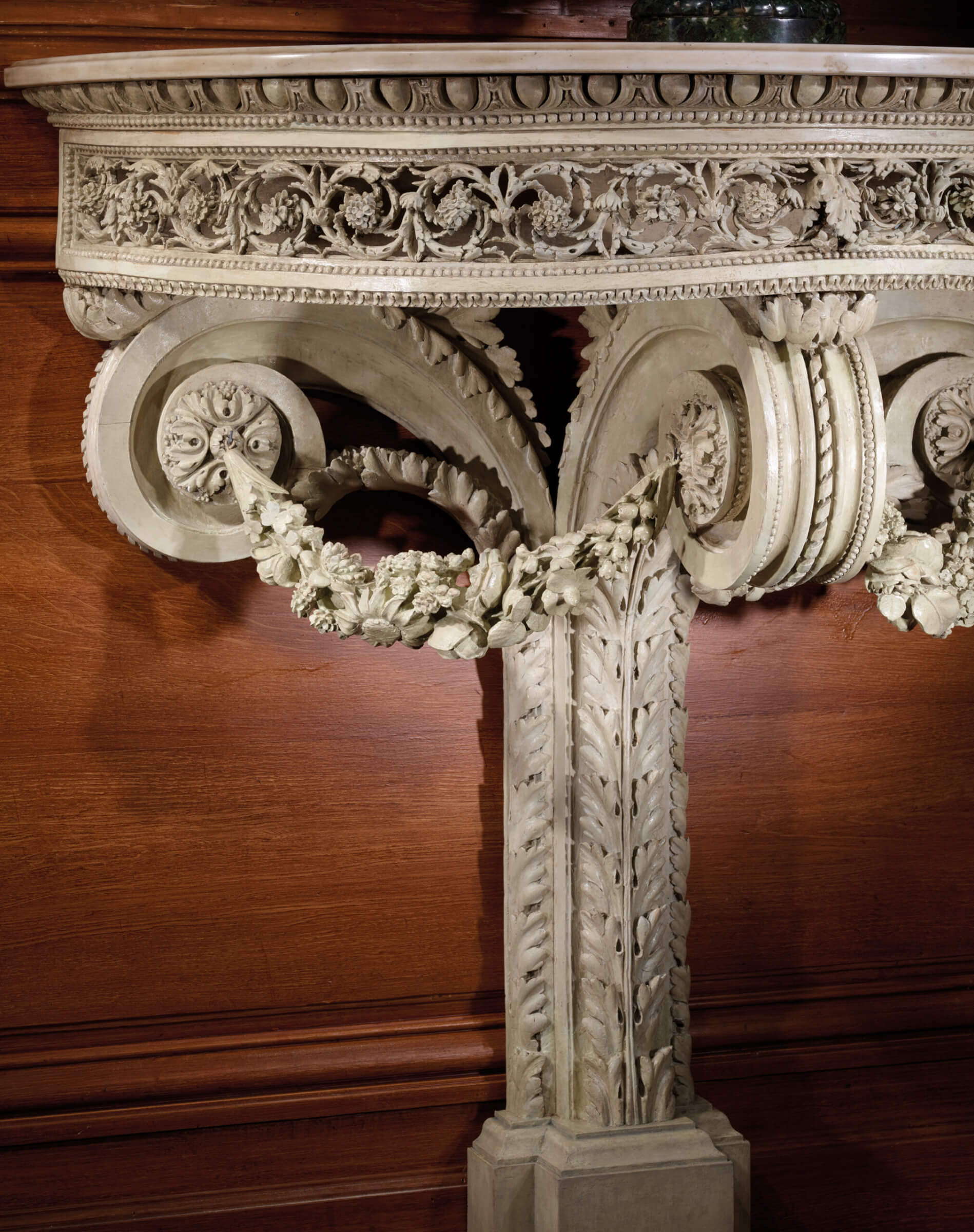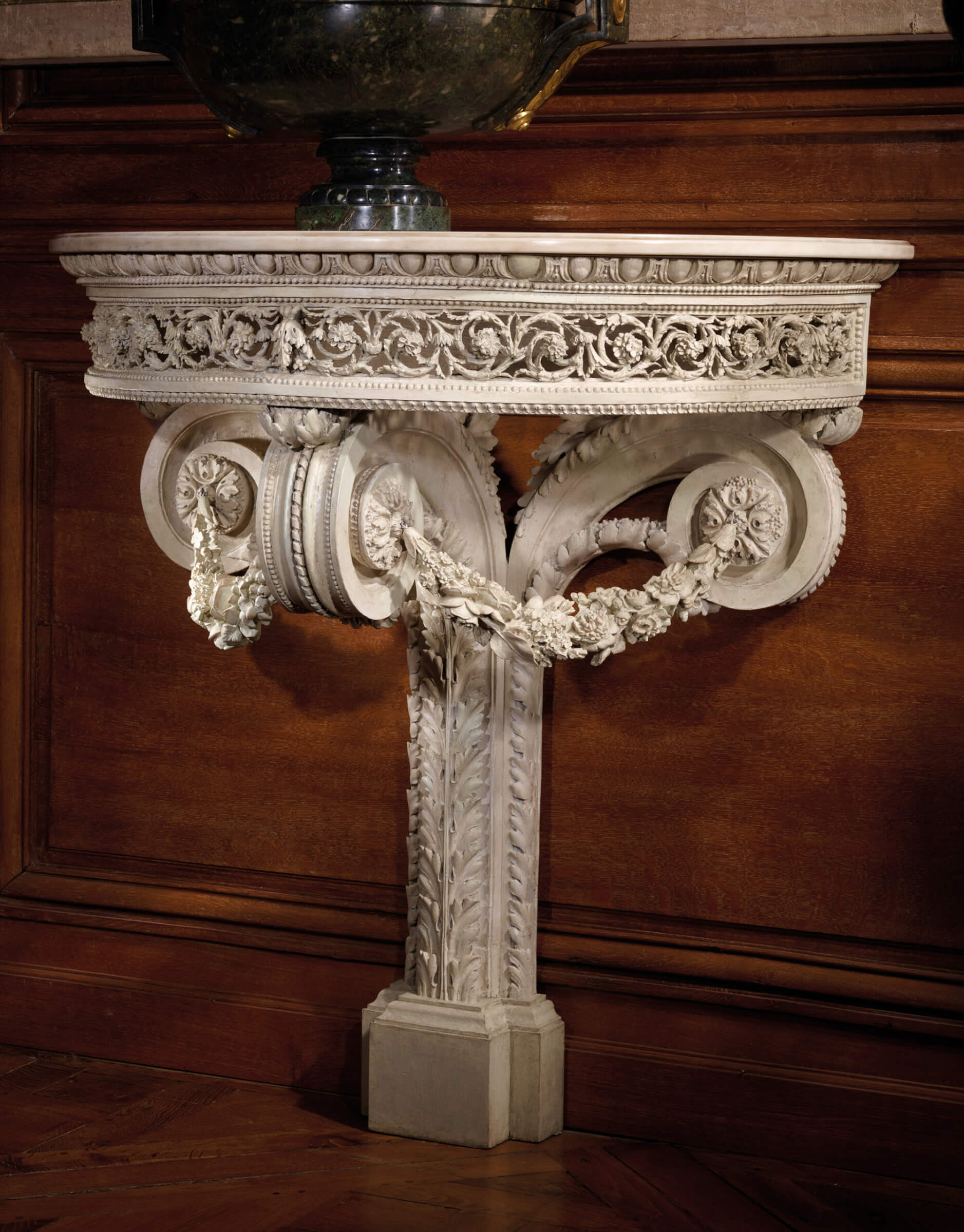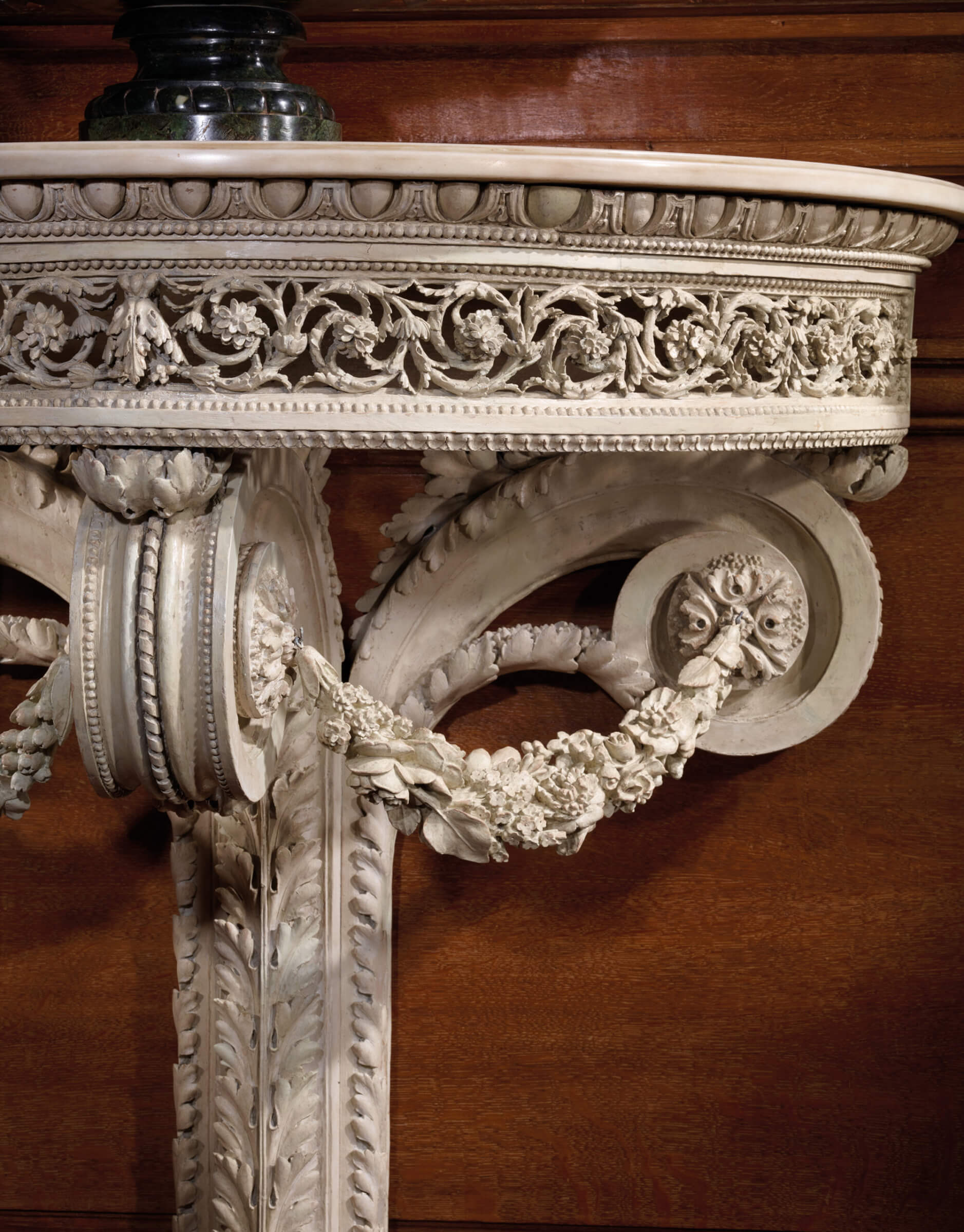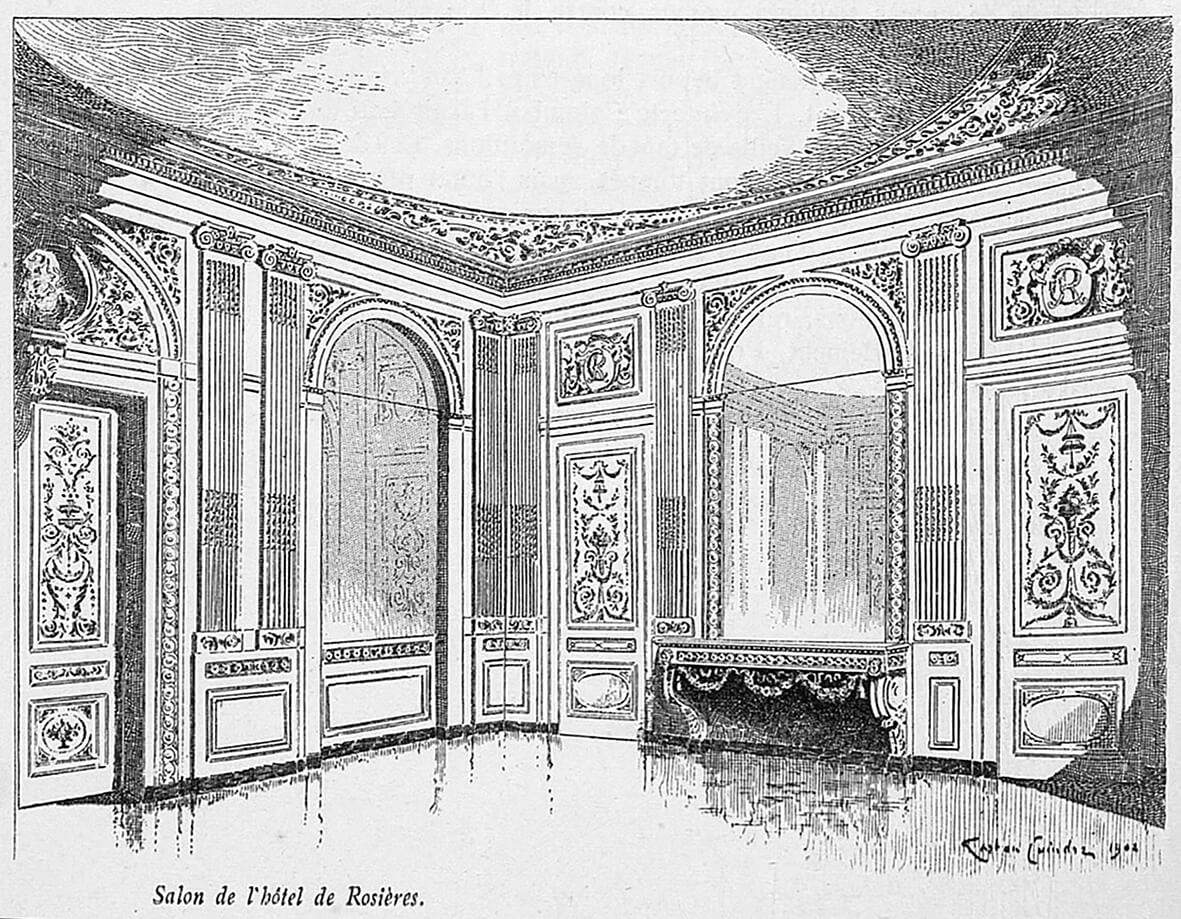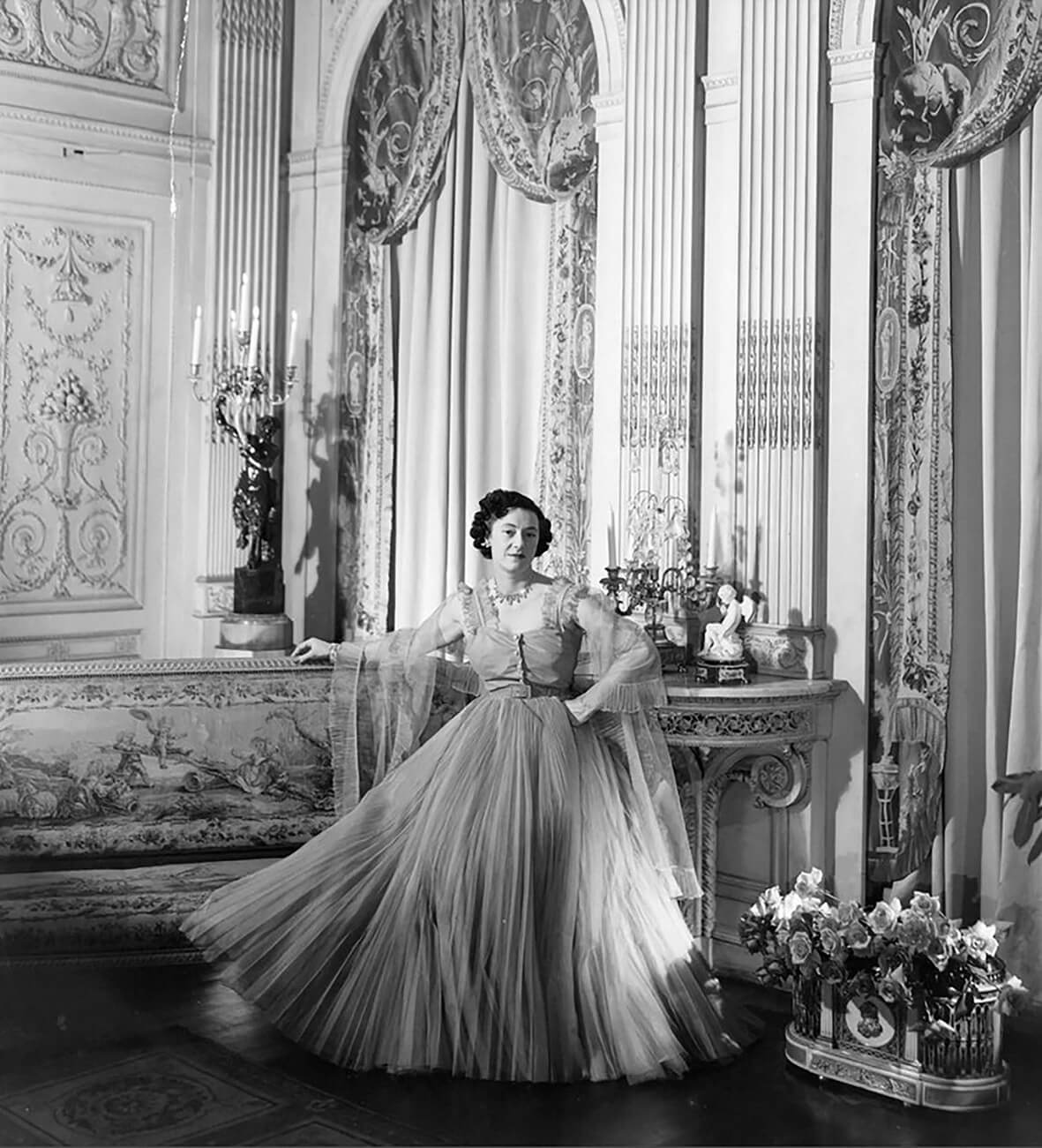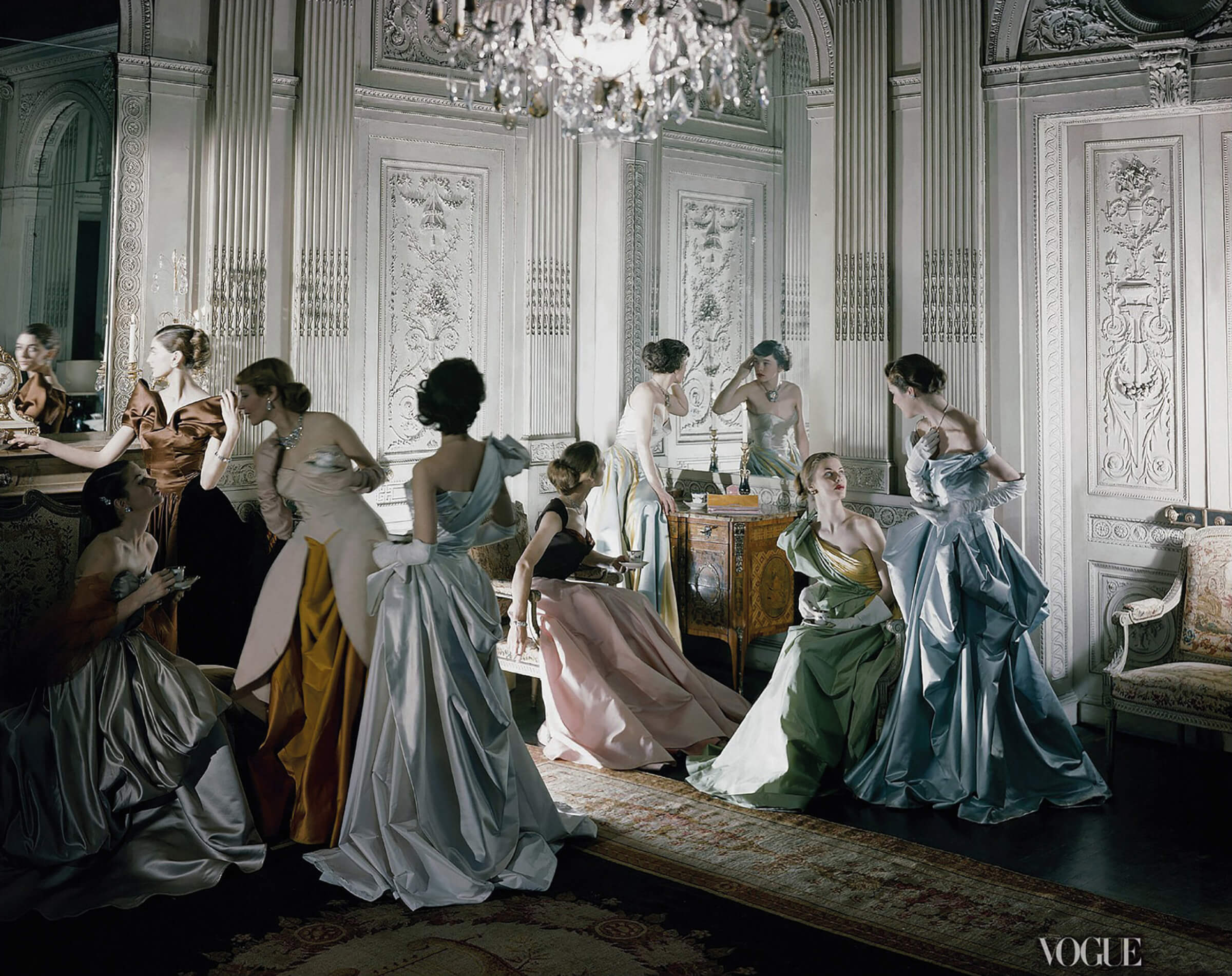

Moulded limewood, carved and painted in sea-green (vert d’eau); white marble.
H. 101 cm. (39 ¾ in.); W. 99.5 cm. (39 ¼ in.); D. 50 cm. (19 ¾ in.).
MARKS AND INSCRIPTIONS: 44341, number in graphite visible on the frames of the two consoles and on the reverse of their marble tops; number 23 visible twice, in stencil and blue wax crayon, on the reverse of the rear crosspiece of one of the two consoles; number 25 similarly visible on the reverse of the rear crosspiece of the second console.
PROVENANCE: executed in 1789 for the salon of the hôtel (townhouse) of the marquis François-Gabriel Chappuis de Rosières (1736-1814), President of the Parliament of Franche-Comté, now at n°. 6 rue Pasteur, in the La Boucle district of Besançon, France; collection of the banker Aaron Veil-Picard (1792-1868), who purchased the hôtel Chappuis de Rosières in 1850; acquired between 1902 and 1910, by Prince Henri Amédée de Broglie (1849-1917) and his wife, née Marie Say (1857-1943), future Princess of Orléans and immensely wealthy daughter of the industrialist Constant Say, owner of the refinery of the same name; acquired in 1944, together with the wood paneling and the large console, by the Metropolitan Museum of Art, New York, which installed the ensemble in one of its rooms; deaccessioned by the Metropolitan Museum of Art in 1946; acquired the same year, with the wood paneling and the large console, by the famous antique decorating and furnishing house French & Co, which reassembled the ensemble in its premises at 210 East 57 St., New York; sold by French & Co in New York at an unknown date.
LITERATURE: Gaston Coindre, Mon vieux Besançon, Besançon, 1900-1910, p. 395-397; Bruno Pons, Grands décors français, 1650-1800, Dijon, 1995, p. 128-131; John Harris, Moving Rooms: The trade in Architectural Salvages, New Haven and London, 2007, p. 296, note 61; Carl Magnusson, “Claude-Antoine Colombot, Besançon, 1747-1821, Projet de consoles pour l’hôtel Chappuis de Rosières à Besançon”, in Emmanuelle Brugerolles (ed.), De l’alcôve aux barricades. De Fragonard à David. Dessins de l’Ecole des Beaux-Arts, Paris, 2016, p. 308-309.
This pair of consoles was executed between 25th August and 12th November 1789 by the sculpteur Joseph-André Privé for the salon in the hôtel (townhouse) of the Marquis François-Gabriel Chappuis de Rosières (1736-1814), President of the Parliament of Franche-Comté, in Besançon. This room, with its wood panelling and three consoles en suite—a large rectangular one opposite the mantelpiece, and the two half-moon consoles shown here, which were located between the windows—is to this day considered as an absolute masterpiece of the decorative arts in Besançon during the reign of Louis XVI.
Ill. 1 – Salon de l’hôtel de Rosières, drawn in situ in 1902 by Gaston Coindre (1844-1914) and published by the latter in his book entitled Mon vieux Besançon, published in Besançon between 1900 and 1910, p. 396.
Ill. 2 – Cecil Beaton (1904-1980), Portrait of Loelia Lindsay (1902-1993), Duchess of Westminster, wearing a Balmain dress and Van Cleef & Arpels jewellery, posing at French & Co, in the salon Chappuis de Rosières, beside one of our two consoles, for Vogue magazine, dated 1st April 1948.
Ill. 3 – Iconic image of the ball gowns of Charles James (1906-1978), photographed by Cecil Beaton (1904-1980) at French & Co, in the salon Chappuis de Rosières, for Vogue magazine in 1948.
